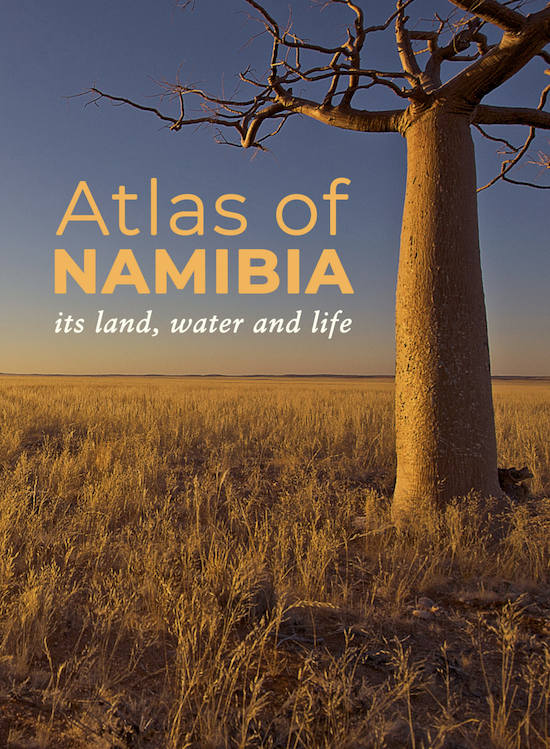Potential Financing Measures and Mechanisms for Marine Conservation in Namibia – A Focus on NIMPA
2025 | Publication
Published in June 2025, this policy brief outlines practical and scalable financing options to ensure the long-term sustainability of the Namibian Islands’ Marine Protected Area (NIMPA), Namibia’s first and only designated MPA. Developed through the NIMPA+ Project with support from the Blue Marine Foundation, the brief explores innovative mechanisms such as conservation trust funds, blue bonds, project finance for permanence, and biodiversity credits to complement traditional government and donor funding.
By analysing both large-scale and small-scale financing pathways, the brief provides a roadmap for securing durable investment in marine protection and biodiversity management. The recommendations aim to guide national and local stakeholders in operationalising a sustainable financing model that supports NIMPA’s management plan and strengthens Namibia’s contribution to global ocean conservation targets.
2025 | Publication
Published in 2025, this study explores Local Ecological Knowledge (LEK) from conservancy members and rangers to better understand the preferred vegetation of African savanna elephants in Namibia’s semi-desert highlands. By documenting the plant species most frequently consumed by elephants across seasons, the research highlights the value of traditional knowledge in informing wildlife management. The findings support more culturally grounded and ecologically informed conservation efforts in community-based landscapes where elephants and people coexist.
2025 | Publication
This study examines the spatial patterns of African elephant carcasses in Etosha National Park to better understand the causes of mortality and inform management decisions. Using over a decade of data and advanced spatial modelling techniques, researchers found that elephant deaths are most common near waterholes, roads, and in areas with moderate rainfall. Many of these deaths are linked to natural causes, especially anthrax, rather than poaching. The findings help identify high-risk areas for disease outbreaks and provide valuable insights for improving surveillance, resource planning, and wildlife health management in Namibia’s largest national park.
2025 | Publication
A decade of experience in northwest Namibia has shown that locally-led, inclusive approaches to black rhino protection can achieve remarkable results. The Conservancy Rhino Ranger program, developed by Save the Rhino Trust and partners, reduced illegal hunting by over 90% — without relying heavily on militarized tactics. Instead, the program empowered local rangers, built community ownership, and created conservation-linked income opportunities. These efforts are now helping to redefine how conservation success is measured, placing community values, collaboration, and continuous learning at the heart of wildlife protection.
2024 | Publication
While African savannah elephant populations are declining in many parts of Africa, they are increasing in Namibia’s arid northwest, where they are expanding beyond protected areas into communal and commercial lands. A study tracking eight elephant herds using satellite collars found that most herds moved across different land types and frequently breached fences, some of which have disease control functions. Despite the challenges this poses—such as fence damage and livestock disease risks—the expansion brings economic opportunities for landowners and communal conservancies through tourism and wildlife use. However, outdated fencing laws complicate these benefits. The study recommends a holistic review of Namibia’s policies and legal frameworks to support elephant range expansion and maximize conservation and economic gains.
Preserving Coastal and Marine Ecosystem Services through Effective NIMPA Management
2024 | Publication
This report explores how protecting the Namibian Islands’ Marine Protected Area (NIMPA) safeguards biodiversity, supports climate resilience, and uplifts local communities through ecosystem services. Funded through the NIMPA+ initiative, it provides a deep dive into the value of fisheries, kelp, carbon storage, cultural heritage, and tourism. Using global case studies and local data, it highlights the importance of ecosystem services valuation in guiding conservation and sustainable development along Namibia’s coast.
Angling Species ID Guide for Namibia
2023 | Publication
This handbook provides an easy-to-use guide to identifying the sharks, skates, rays, and chimaeras (chondrichthyans) commonly caught by shore-based anglers in Namibia. It also provides anglers in Namibia with the most up-to-date information on internationally accepted best-practice techniques for catching, handling, and releasing chondrichthyans in a way that is safe for both anglers and fish.

The aims of this handbook are to help anglers to identify species correctly and record some basic information on each chondrichthyan they catch, and to spark interest amongst Namibians more broadly in these fascinating animals. (Download)
Atlas of Namibia
2022 | Publication
If you’re seeking a comprehensive understanding of Namibia, look no further than this fascinating new Atlas. This book contains a wealth of information, including an array of maps, charts, and images that showcase everything from aridity to zebras in Zambezi. With comprehensive coverage of annual averages, long- and short-term variations, and contrasts and convergences, this Atlas is sure to captivate readers. Additionally, it explores fresh and interesting topics, including the historical heritage of Namibia, indigenous plant products, wildlife migrations, and the nation’s overall happiness. Furthermore, it delves into crucial topics such as Namibia’s marine environment, livelihoods and land, species diversity and habitat loss, resource economics and management, human-wildlife conflict, climate change, and much more.

To find out more about the Atlas of Namibia visit their website at Atlas of Namibia
Communities Leading Natural Resource Management
2022 | Publication
USAID Resilient Waters aims to build more resilient and water-secure Southern African communities and ecosystems. To celebrate World Environment Day on June 5, 2022, we work with four communities in Namibia to enhance community-based natural resource management (CBNRM). This aligns well with this year’s theme #OnlyOneEarth calls for collective, transformative action on a global scale to celebrate, protect and restore our planet. (Download)
